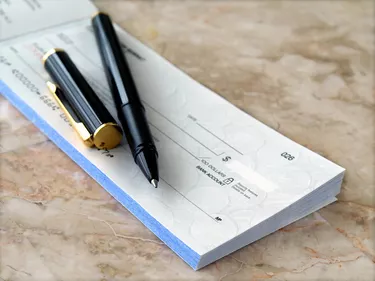
Check fraud is a major issue in the United States. A 2014 JP Morgan study for the Association for Financial Professionals stated that 82 percent of firms who had experienced attempted, or successful, fraud activity were victims of check fraud. There are a few ways to determine if a check is fake and ways to protect yourself from check scams.
Feel the Edges
Video of the Day
Most checks will have one side that is perforated or rough. If all four sides are smooth to the touch, the check may have been fraudulently printed from a computer. While it is now possible to print legitimate checks in-house with specialized magnetic ink and blank card stock, the absence of a perforated edge is one of the most easily recognized signs of fraud.
Video of the Day
Bank Logo and Address
If the check has no bank logo or it is clearly faded, that is a sign of a fake check. Also, if you are concerned about the validity of the check, verify that the address listed is recognized by the issuing bank. Many times, fake checks will only list a Post Office Box number or will list an incorrect street address or ZIP code.
MICR line and Check Number
The figures along the bottom of a check are the routing, account and individual check numbers. They're in a Magnetic Ink Character Recognition or MICR font. These numbers should look and feel dull. If the numbers seem too shiny, the check could be fake. Also look at the check numbers on the bottom and the top corner. With real checks, they will always match.
Verify Routing Number
All checks should have a nine digit routing number along the bottom identifying the banking institution. If there is no routing number, or the number contains more or less than nine digits that should raise a red flag. You can verify authenticity of a routing number with this handy tool from the American Bankers Association (ABA).
Tip
The Consumer Federation of America and the National Consumers League says the best way to protect yourself from fraud is to never send money anywhere in return for a check. If you're still suspicious, contact the organization or bank on the check to verify its authenticity.